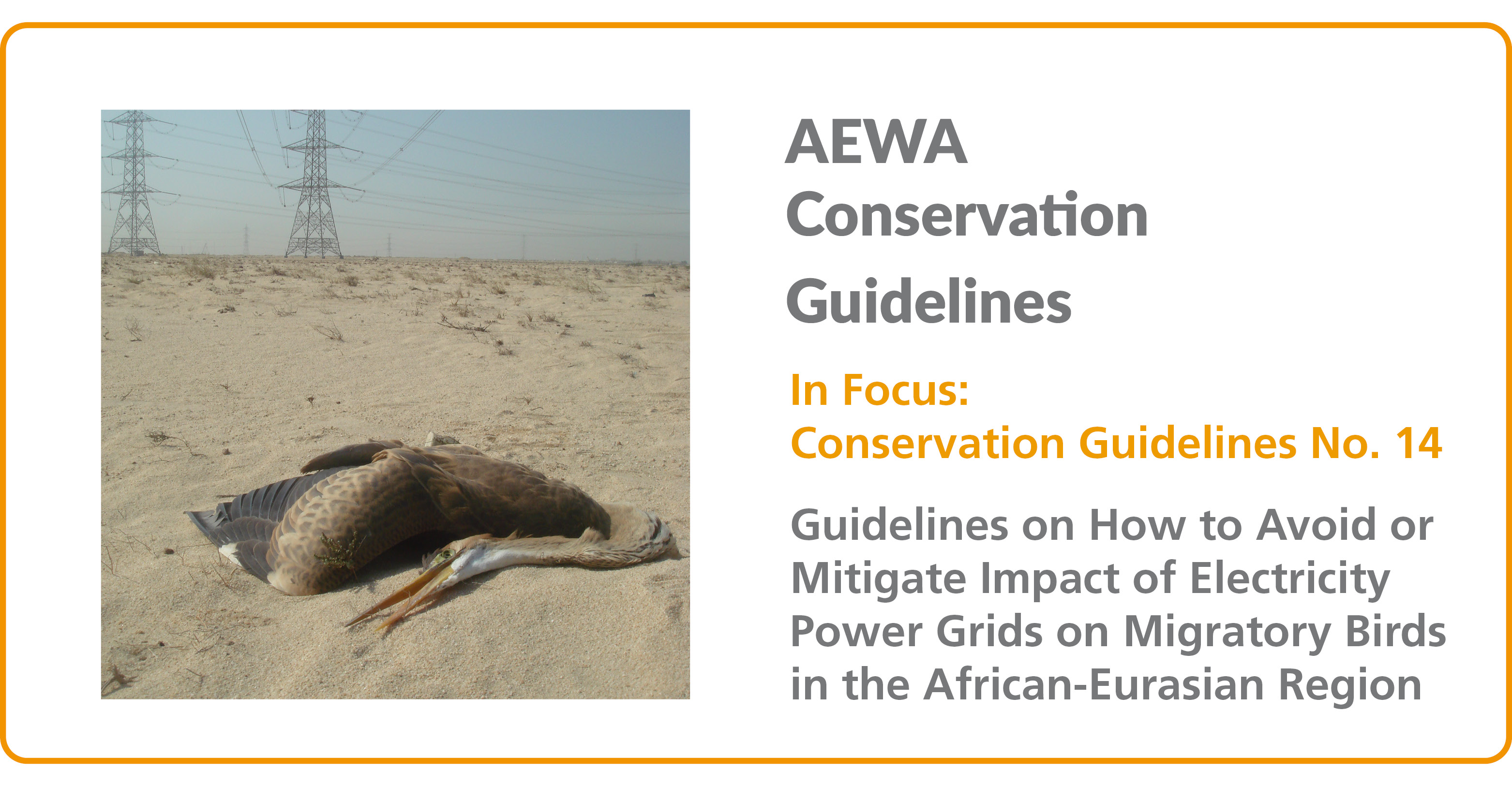In Focus: AEWA Conservation Guidelines No. 14 - Guidelines on How to Avoid or Mitigate Impact of Electricity Power Grids on Migratory Birds in the African-Eurasian Region

Electrocuted Purple Heron (Ardea purpurea) © Abdullah Alsuhaibany
Bonn, 12 December 2019 - The AEWA Action Plan requires the Secretariat and the Technical Committee to develop a series of Conservation Guidelines to help the Parties implement the Agreement. As part of this series, guidelines on avoiding or mitigating impact of electricity power grids on migratory birds in the African-Eurasian region have been published, funded by the German energy company, RWE Rhein-Ruhr Netzservice GmbH and produced by Bureau Waardenburg (Netherlands), Endangered Wildlife Trust – Wildlife & Energy Programme, South Africa, Boere Conservation Consultancy, Netherlands and STRIX Ambiente e Inovação, Portugal.
These guidelines offer various technical and legislative approaches for avoiding or mitigating the impact of electrocution and collision of migratory birds across the African-Eurasian region as well as suggestions for assessing and monitoring the effectiveness of mitigation and preventive measures.
To minimize the effects of power lines on birds, Parties are encouraged to take the following steps:
Step 1: Develop and support strategic planning of electricity grid networks, including burying low- to medium-voltage power lines. Apply appropriate Strategic Environmental Assessment (SEA) procedures for decisions on the need of power lines on a national scale and apply similar appropriate Environmental Impact Assessments (EIA) procedures when construction starts. Consideration of the risks to birds from collisions and from electrocution should be an integral part of EIA procedures. More details on how to apply SEA and EIA procedures can be found in AEWA Conservation Guidelines No. 11 (2008): Guidelines on how to avoid, minimize or mitigate impact of infrastructural developments and related disturbance affecting waterbirds (AEWA Technical Series No. 26).
Step 2: Develop and support collaboration between utility companies, conservationists, governmental organizations, landowners and other stakeholders through support of voluntary Memoranda of Understanding. If necessary, legislate to impose obligatory cooperation on utility companies for strategic planning and mitigation of negative effects on birds.
Step 3: Develop databases and spatial datasets on the presence of protected areas and other key bird areas and presence of susceptible bird species, including the routes that they take between breeding, feeding and resting areas. If there are no data available from regular national bird monitoring exercises, then data must be collected from the field over a minimum period of one year.
Step 4: New power lines constructed above ground should be routed to avoid key areas for birds, taking into account the presence of national and international protected areas, abiotic factors that influence the bird/power line conflicts and the susceptibility of relevant bird species.
Step 5: Develop lists of key conservation areas and species in order to identify priorities for mitigating sections of new power lines and refitting existing power lines retrospectively.
Step 6: Mitigate problematic sections of power lines to minimize the risk of electrocution and collisions on birds by using state-of-the-art techniques.
Step 7: Develop and support evaluation programmes that use standardized protocols to monitor the effectiveness of mitigation measures as well as to improve mitigation techniques, including monitoring of incidence of electrocution and collision and the presence and movements of birds in order to assess the scale of impact.
The guidelines were welcomed by the 10th Conference of the Parties to CMS in November 2011, adopted by the 5th Session of the Meeting of the Parties to AEWA in May 2012, which called upon Parties and encouraged non-Party Range States to implement the guidelines, as appropriate, and endorsed by the 1st Meeting of Signatories to the Raptors MOU in December 2012.
The Guidelines were first published as AEWA Technical Series No. 50/Conservation Guidelines No. 14, CMS Technical Series No.29 and Raptors MOU Technical Series No.3.
Last updated on 22 June 2020


